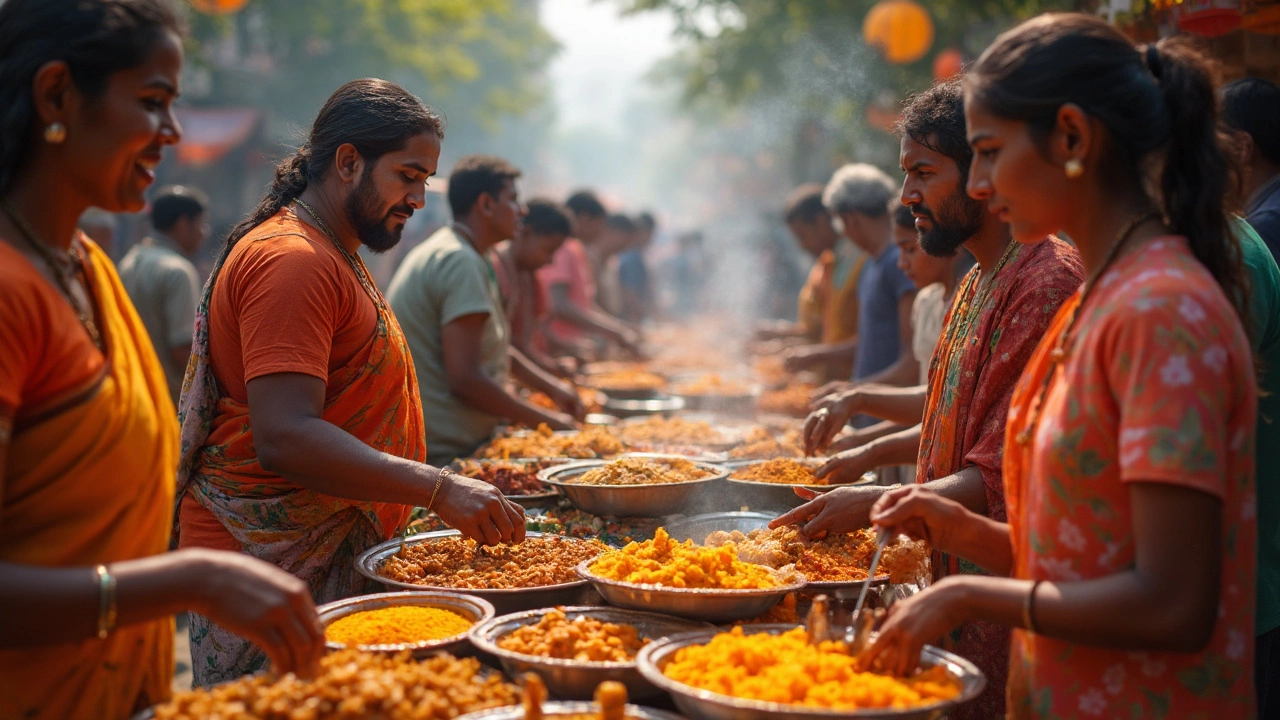Food Culture in India – A Journey Through Flavor and Tradition
When you start looking at Food Culture, the set of customs, ingredients, and techniques that define what people eat. Also known as culinary heritage, it shapes daily meals, festivals, and even family stories. In India, Indian cuisine, a mosaic of regional flavors, seasonal produce, and centuries‑old methods acts as the core, while spices, the aromatic power‑houses that turn simple grains into memorable dishes give every plate its signature punch. Together they form a web where food culture encompasses regional dishes, cooking tools, and the stories behind each bite.
Key Elements That Shape Indian Food Culture
First up, regional dishes, the local specialties that reflect climate, agriculture, and history of each state. From the coconut‑laden curries of Kerala to the tandoor‑baked breads of Punjab, these dishes illustrate how geography influences taste. Next, the art of traditional cooking techniques, methods like tempering, slow simmering, and stone‑grinding that have been passed down through generations. These techniques determine texture, aroma, and the nutritional profile of meals. Finally, the role of spices cannot be overstated – they act as flavor boosters, preservatives, and sometimes even medicinal agents. When you combine a regional dish with the right spice blend and a proven cooking method, you get the authentic taste that defines Indian food culture.
Understanding these connections helps you see why a simple dal can vary dramatically from one village to the next. The same lentils, when tempered with mustard seeds in the south or with cumin and garam masala in the north, turn into two distinct experiences. This illustrates a semantic triple: "Food culture requires spices," and another: "Traditional cooking techniques influence regional dishes." Recognizing these patterns also explains why certain foods become staples during festivals – the rituals often call for specific spices or cooking styles that reinforce cultural identity.
Our collection of articles below digs into each of these pillars. You’ll find tips on why adding lemon to biryani brightens the rice, how paneer and tofu compare for vegetarian protein, and the science behind why rotis sometimes refuse to puff. There are deep dives into the nutrition of dal, the shelf life of chutney, and even the health myths surrounding popular street foods. Each post ties back to the broader idea that food is more than fuel; it’s a living record of history, geography, and community.
Whether you’re a beginner trying to master a basic roti or a seasoned cook hunting for the secret ingredient that makes biryani unforgettable, this page serves as a roadmap. The posts are grouped by the themes we just outlined – regional specialties, spice science, cooking techniques, and cultural quirks – so you can jump straight to the topic that sparks your curiosity. Let’s get into the flavors, stories, and practical tips that make India’s food culture so rich and endlessly fascinating.

Why Indian Street Food is Served by Hand
Indian street food isn't just about flavors; it's also about the way it's served – using hands. This method isn't just convenience but is deeply rooted in tradition and practicality. In India, eating with hands is culturally significant and enhances the sensory food experience. This approach also helps in measuring the right temperatures and portion sizes when serving food. Discover why Indian street food vendors prefer this method and how it adds to the authenticity of the culinary experience.